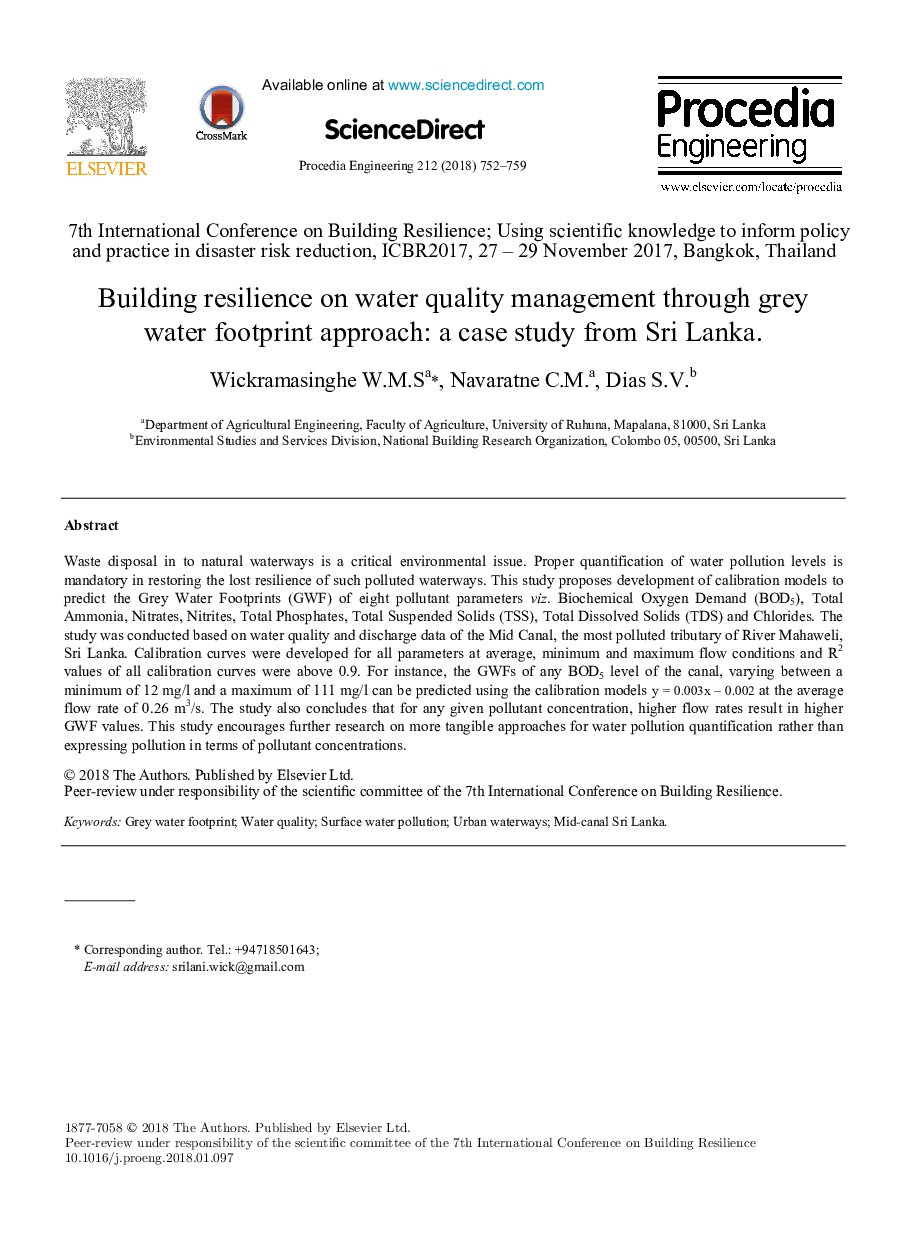| کد مقاله | کد نشریه | سال انتشار | مقاله انگلیسی | نسخه تمام متن |
|---|---|---|---|---|
| 7226149 | 1470611 | 2018 | 8 صفحه PDF | دانلود رایگان |
عنوان انگلیسی مقاله ISI
Building resilience on water quality management through grey water footprint approach: a case study from Sri Lanka.
ترجمه فارسی عنوان
انعطاف پذیری ساختمان در مدیریت کیفیت آب از طریق روش خاکستری آب: یک مطالعه موردی از سریلانکا.
دانلود مقاله + سفارش ترجمه
دانلود مقاله ISI انگلیسی
رایگان برای ایرانیان
کلمات کلیدی
رد پای آب خاکستری، کیفیت آب، آلودگی سطحی آب، آبراهه های شهری میانه کانال سریلانکا،
موضوعات مرتبط
مهندسی و علوم پایه
سایر رشته های مهندسی
مهندسی (عمومی)
چکیده انگلیسی
Waste disposal in to natural waterways is a critical environmental issue. Proper quantification of water pollution levels is mandatory in restoring the lost resilience of such polluted waterways. This study proposes development of calibration models to predict the Grey Water Footprints (GWF) of eight pollutant parameters viz. Biochemical Oxygen Demand (BOD5), Total Ammonia, Nitrates, Nitrites, Total Phosphates, Total Suspended Solids (TSS), Total Dissolved Solids (TDS) and Chlorides. The study was conducted based on water quality and discharge data of the Mid Canal, the most polluted tributary of River Mahaweli, Sri Lanka. Calibration curves were developed for all parameters at average, minimum and maximum flow conditions and R2 values of all calibration curves were above 0.9. For instance, the GWFs of any BOD5 level of the canal, varying between a minimum of 12 mg/l and a maximum of 111 mg/l can be predicted using the calibration models y = 0.003x - 0.002 at the average flow rate of 0.26 m3/s. The study also concludes that for any given pollutant concentration, higher flow rates result in higher GWF values. This study encourages further research on more tangible approaches for water pollution quantification rather than expressing pollution in terms of pollutant concentrations.
ناشر
Database: Elsevier - ScienceDirect (ساینس دایرکت)
Journal: Procedia Engineering - Volume 212, 2018, Pages 752-759
Journal: Procedia Engineering - Volume 212, 2018, Pages 752-759
نویسندگان
W.M.S. Wickramasinghe, C.M. Navaratne, S.V. Dias,
